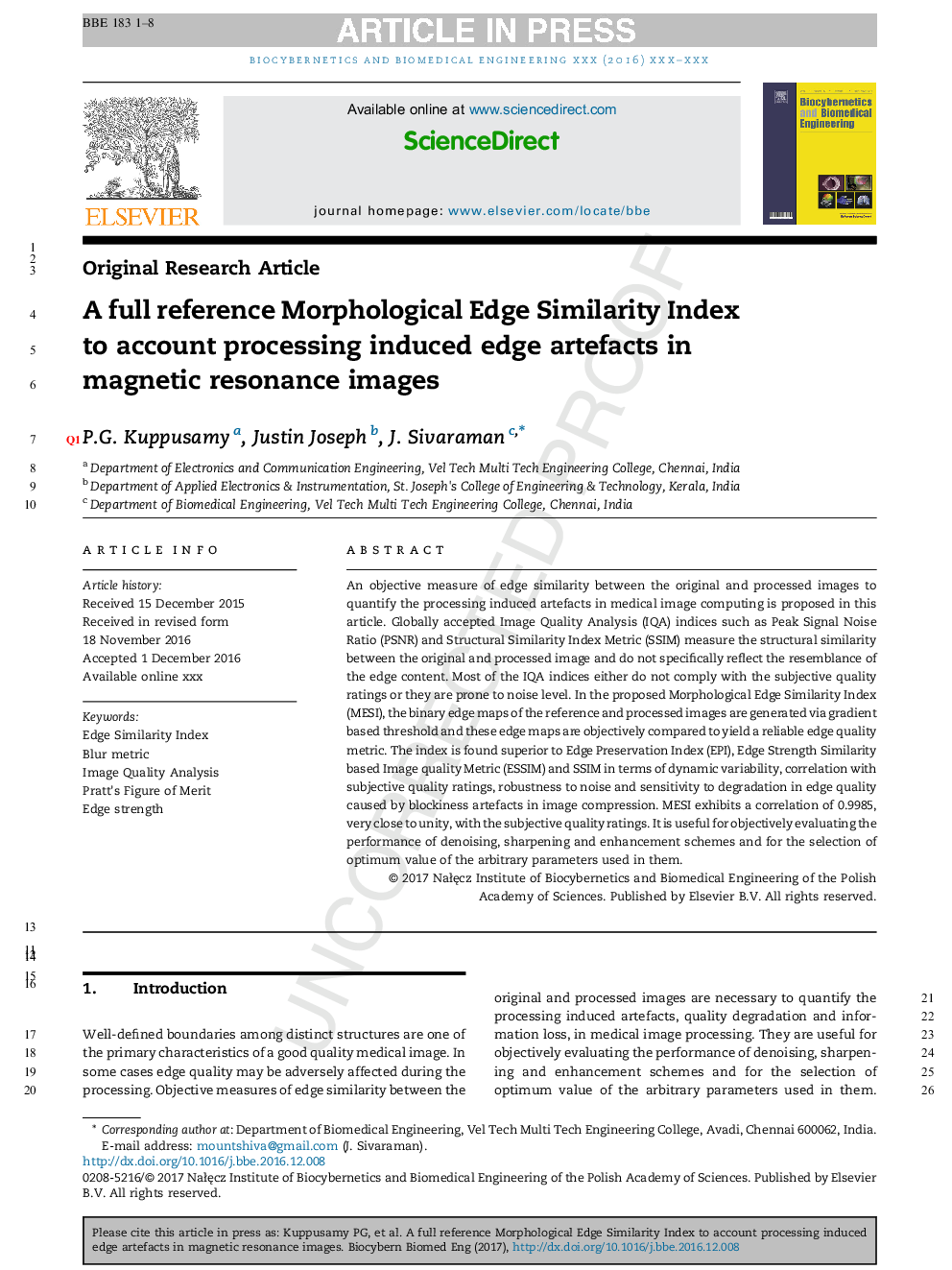| Article ID | Journal | Published Year | Pages | File Type |
|---|---|---|---|---|
| 6484255 | Biocybernetics and Biomedical Engineering | 2017 | 8 Pages |
Abstract
An objective measure of edge similarity between the original and processed images to quantify the processing induced artefacts in medical image computing is proposed in this article. Globally accepted Image Quality Analysis (IQA) indices such as Peak Signal Noise Ratio (PSNR) and Structural Similarity Index Metric (SSIM) measure the structural similarity between the original and processed image and do not specifically reflect the resemblance of the edge content. Most of the IQA indices either do not comply with the subjective quality ratings or they are prone to noise level. In the proposed Morphological Edge Similarity Index (MESI), the binary edge maps of the reference and processed images are generated via gradient based threshold and these edge maps are objectively compared to yield a reliable edge quality metric. The index is found superior to Edge Preservation Index (EPI), Edge Strength Similarity based Image quality Metric (ESSIM) and SSIM in terms of dynamic variability, correlation with subjective quality ratings, robustness to noise and sensitivity to degradation in edge quality caused by blockiness artefacts in image compression. MESI exhibits a correlation of 0.9985, very close to unity, with the subjective quality ratings. It is useful for objectively evaluating the performance of denoising, sharpening and enhancement schemes and for the selection of optimum value of the arbitrary parameters used in them.
Related Topics
Physical Sciences and Engineering
Chemical Engineering
Bioengineering
Authors
Kuppusamy P.G., Justin Joseph, Sivaraman J.,
